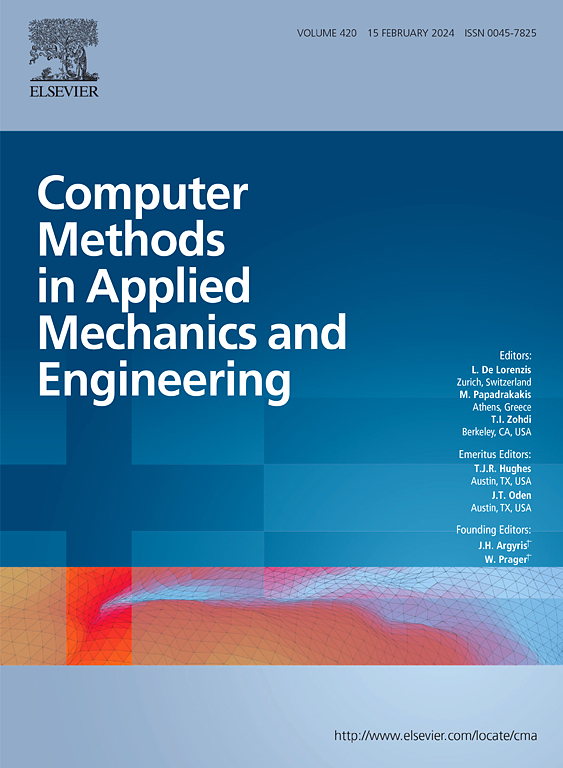通过神经进化在可获得弹性的极值上填充细胞超材料
IF 6.9
1区 工程技术
Q1 ENGINEERING, MULTIDISCIPLINARY
Computer Methods in Applied Mechanics and Engineering
Pub Date : 2025-03-27
DOI:10.1016/j.cma.2025.117950
引用次数: 0
摘要
材料不同力学性能之间的权衡对工程材料设计提出了根本性的挑战,例如平衡刚度与韧性,重量与吸能能力,以及各种弹性系数之间的平衡。尽管基于梯度的拓扑优化方法在寻找特定的设计和性能方面是有效的,但它们不是测量超材料巨大设计空间的有效工具,因此无法揭示相互依赖的材料性能的可实现边界。其他常见的方法,如参数化设计或数据驱动的方法,分别受到几何结构缺乏多样性或难以从已知数据推断的限制。在这项工作中,我们将多种竞争材料特性的同时探索制定为一个多目标优化(MOO)问题,并采用神经进化算法来有效地解决它。组合模式生成网络(cppn)被用作单元格设计的生成模型,它提供了非常紧凑但无损的几何编码。采用改进的增强拓扑神经进化(NEAT)算法对cppn进行演化,使其在MOO问题的Pareto前沿创建超材料设计,揭示不同弹性特性组合的经验边界。展望未来,我们的方法可以作为一个通用框架,用于计算发现包括机器人、生物医学、热工程和光子学在内的一系列领域的各种超材料。本文章由计算机程序翻译,如有差异,请以英文原文为准。
Populating cellular metamaterials on the extrema of attainable elasticity through neuroevolution
The trade-offs between different mechanical properties of materials pose fundamental challenges in engineering material design, such as balancing stiffness versus toughness, weight versus energy-absorbing capacity, and among the various elastic coefficients. Although gradient-based topology optimization approaches have been effective in finding specific designs and properties, they are not efficient tools for surveying the vast design space of metamaterials, and thus unable to reveal the attainable bound of interdependent material properties. Other common methods, such as parametric design or data-driven approaches, are limited by either the lack of diversity in geometry or the difficulty to extrapolate from known data, respectively. In this work, we formulate the simultaneous exploration of multiple competing material properties as a multi-objective optimization (MOO) problem and employ a neuroevolution algorithm to efficiently solve it. The Compositional Pattern-Producing Networks (CPPNs) is used as the generative model for unit cell designs, which provide very compact yet lossless encoding of geometry. A modified Neuroevolution of Augmenting Topologies (NEAT) algorithm is employed to evolve the CPPNs such that they create metamaterial designs on the Pareto front of the MOO problem, revealing empirical bounds of different combinations of elastic properties. Looking ahead, our method serves as a universal framework for the computational discovery of diverse metamaterials across a range of fields, including robotics, biomedicine, thermal engineering, and photonics.
求助全文
通过发布文献求助,成功后即可免费获取论文全文。
去求助
来源期刊
CiteScore
12.70
自引率
15.30%
发文量
719
审稿时长
44 days
期刊介绍:
Computer Methods in Applied Mechanics and Engineering stands as a cornerstone in the realm of computational science and engineering. With a history spanning over five decades, the journal has been a key platform for disseminating papers on advanced mathematical modeling and numerical solutions. Interdisciplinary in nature, these contributions encompass mechanics, mathematics, computer science, and various scientific disciplines. The journal welcomes a broad range of computational methods addressing the simulation, analysis, and design of complex physical problems, making it a vital resource for researchers in the field.

 求助内容:
求助内容: 应助结果提醒方式:
应助结果提醒方式:


